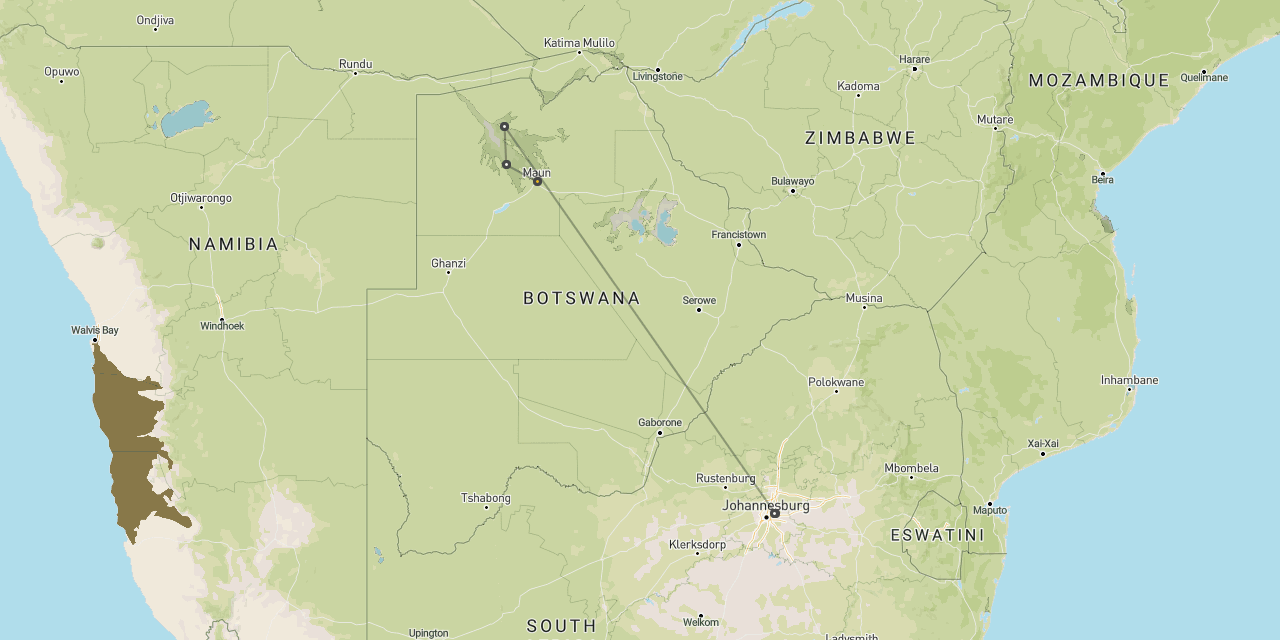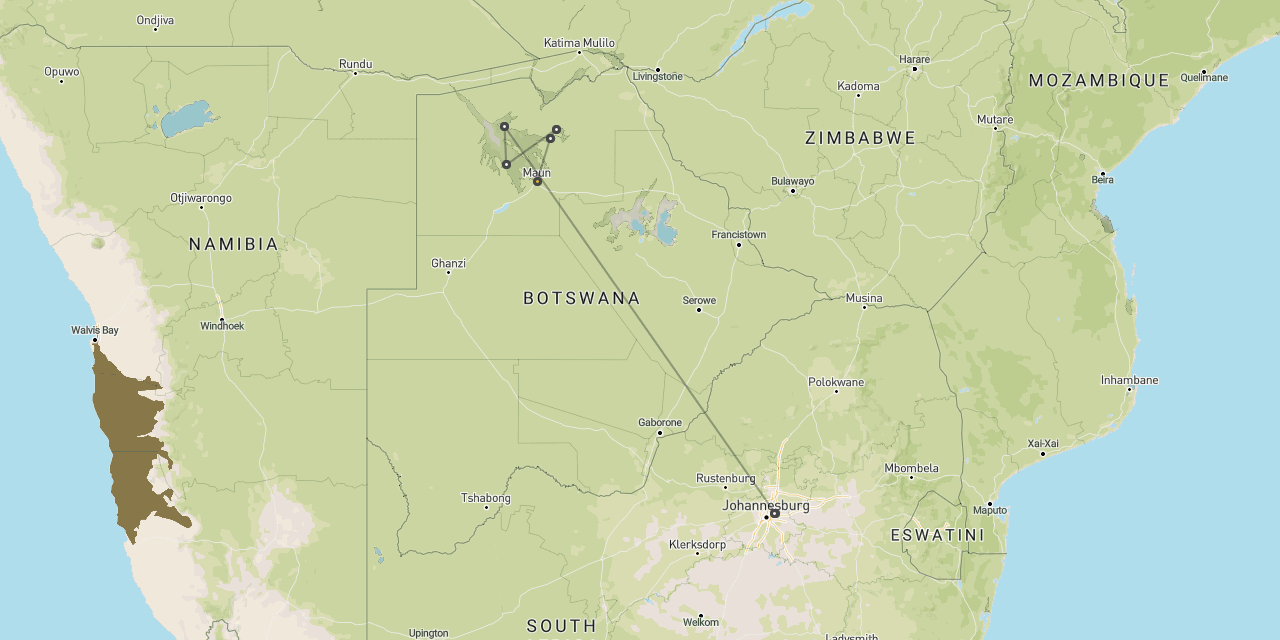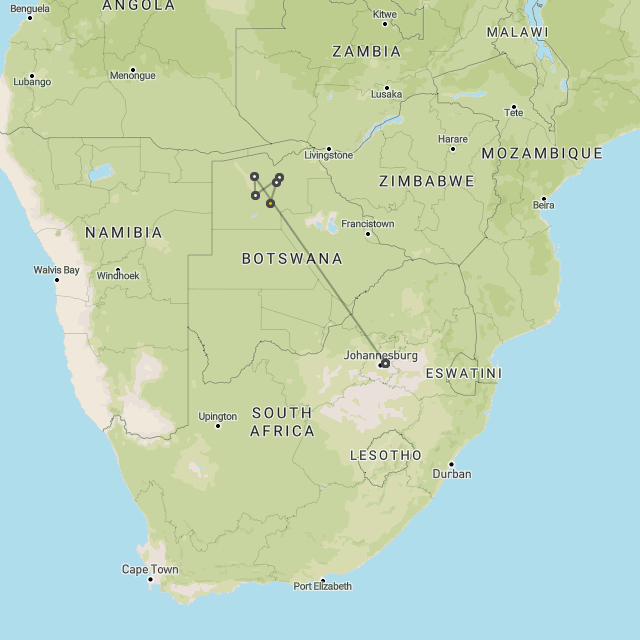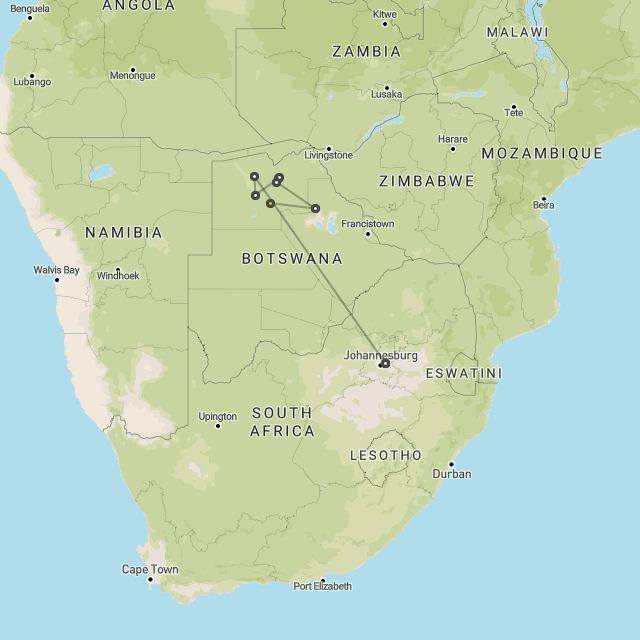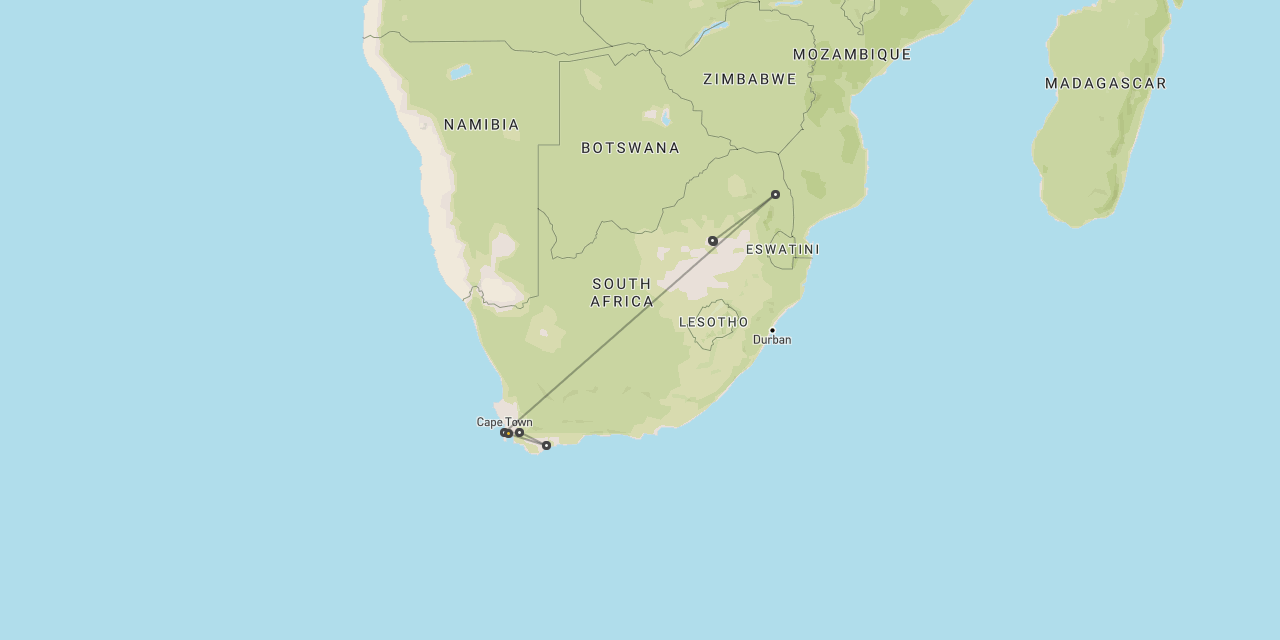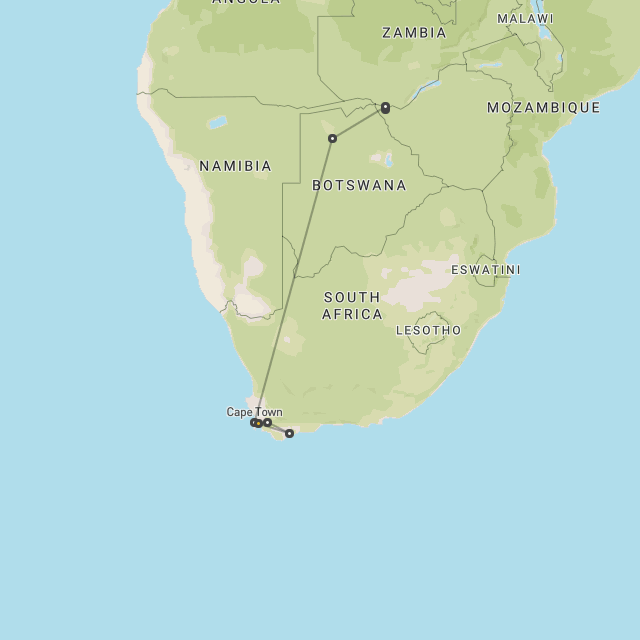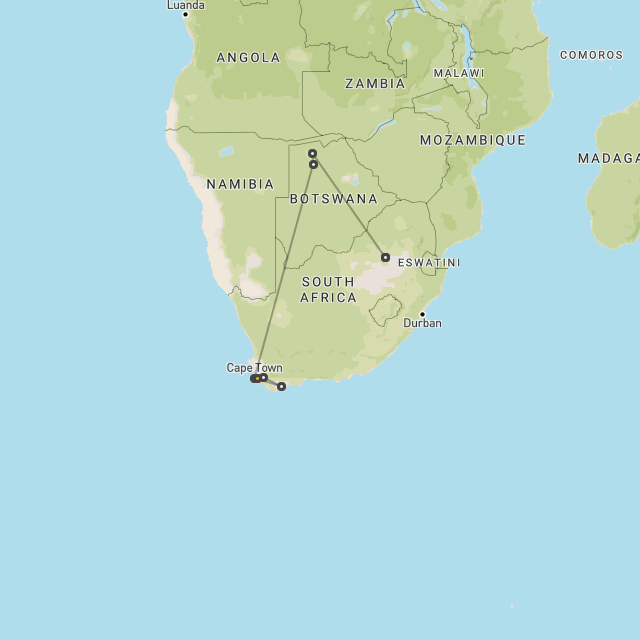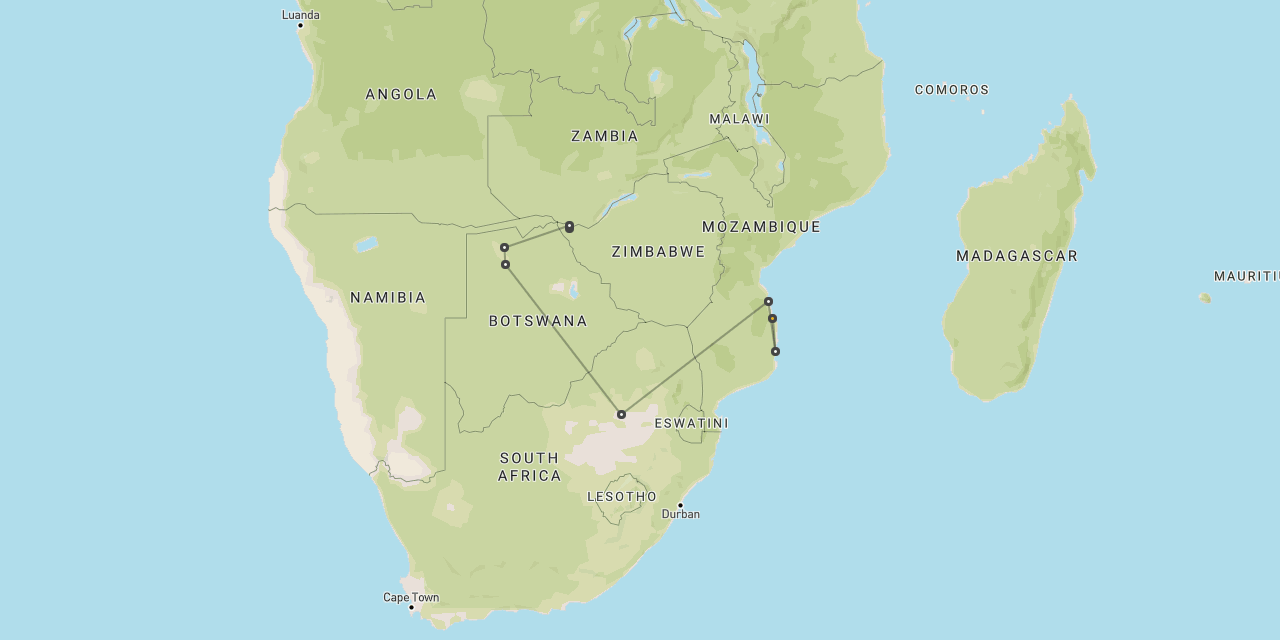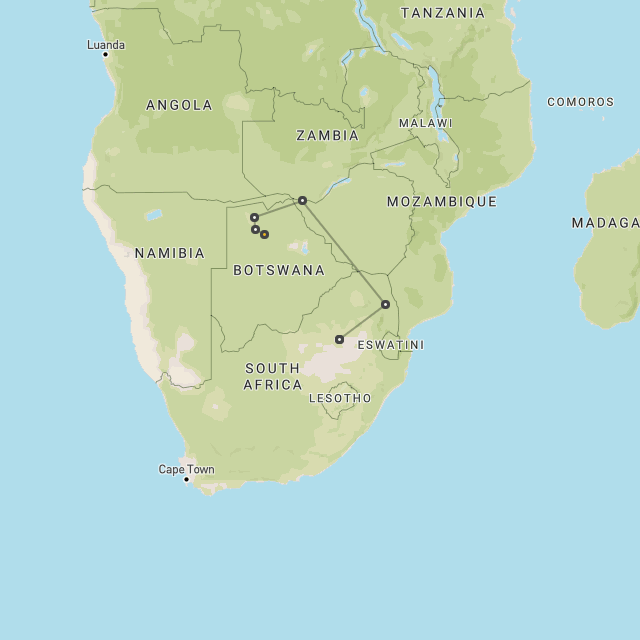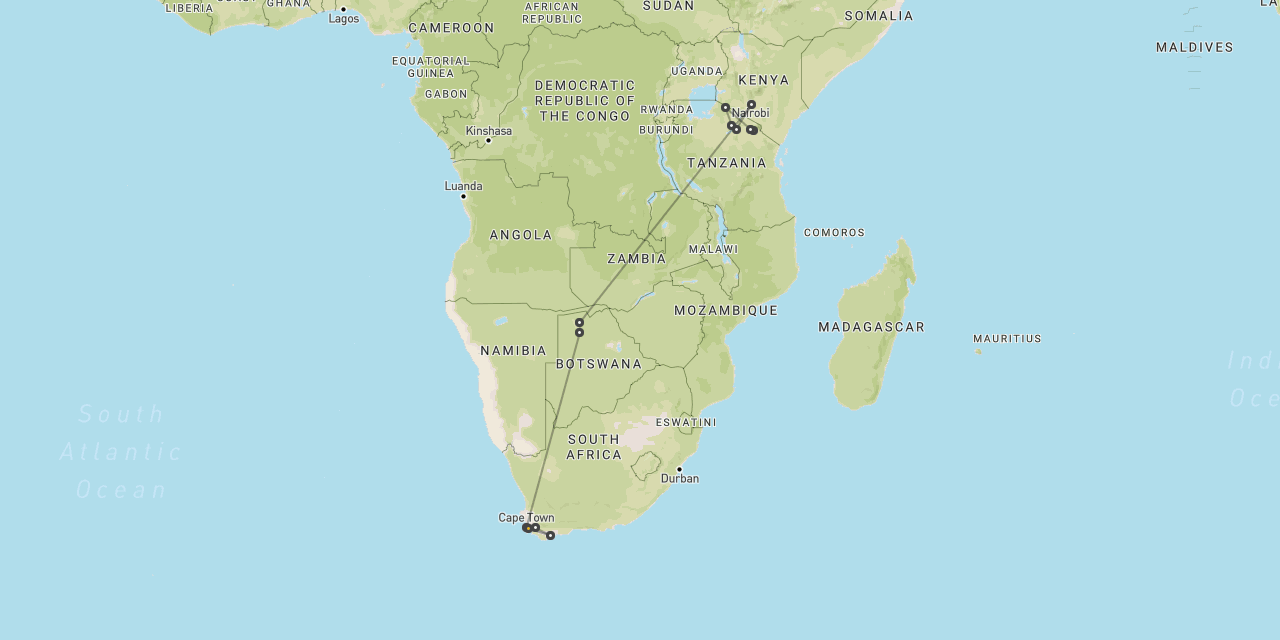
The history, geography and wildlife of the Tuli Block
Tuli Block
is a safari area with an unusual history,
of hominids, warfare and diamonds

Key information …
The Tuli Block and surrounding areas are steeped in history and are home to some of the most significant paleontological and archaeological remains on the continent.
Across the Limpopo River in South Africa dinosaur footprints have been found, which are estimated to be 50-100 million years old.
Evidence of early hominids is widespread in Tuli. Numerous stone tool quarries have been estimated at 100,000 to 200,000 years old.
There is also lots of remnants left by the hunter-gatherer San Bushmen peoples, with Late Stone Age tools and impressive rock-art sites hidden away in the Tswapong and Lepokole Hills.
Around 800 AD the area was overtaken by technologically advanced Bantu tribes from the north, known as the Zhizo or Gokomere, who brought permanent settlements, agriculture, iron-smelting and pottery.
Around 1100 the great silver-working kingdom of Mapungubwe was formed, with its capital on a prominent hill on the south side of the Limpopo. The precursor of the great gold-working empire of Great Zimbabwe, the people of Mapungubwe traded as far abroad as the East Coast, with their fine silver being prized throughout the Arab world. There are still intriguing unexcavated ruins from this period within the Tuli Block.
The first European explorers and missionaries started to arrive in Tuli from around 1800. Great white hunters that frequented the area included the pioneering conservationist Frederick Courteney Selous.
In 1890 a British army expedition under the command of Cecil Rhodes constructed Fort Tuli, on a small kopje along the banks of the Shashe River. This fort served as part of the supply train for the military campaign to annex Matabeleland and Mashonaland, which led to the formation of Rhodesia (later Zimbabwe).
The army crossed the Limpopo River at Rhodes’ Drift and eight years later a second crossing, Pont Drift, was established as part of the Zeederberg Coach route. These crossings are still used today, with the latter being the main point of access for most safari visitors.
As part the great Cape to Cairo railway scheme, Rhodes tried to transfer control of the Bechuanaland Protectorate (now Botswana) to the British South Africa Company. After protests from the chiefs, Queen Victoria intervened and a compromise deal saw Bechuanaland cede the southeast tip of the country to the company, the Tuli Block.
As it turned out, engineers chose to take the railway through Beitbridge, 100km to the east. After the BSAC failed in its attempts to discover gold in the area, the Tuli Block was sliced up into farms and sold to British settlers, to provide a line of protection against Boer expansion.
In 1899 British and Boer forces clashed in the Tuli area, famously at the Battle of Bryce’s Store, where bullets and other remains can still be found in the ruins to this day.
In the 1960s diamonds were found here in the bed of the Motloutse River. Following the course of the river into the heart of Botswana, huge diamond deposits were discovered and vast open-cast mines opened, totally transforming the economy and making Botswana the richest nation in Africa per capita.
In 2006 the governments of Botswana, South Africa and Zimbabwe signed an agreement that led to the creation of the Greater Mapungubwe Transfrontier Conservation Area, which should greatly expand the conservation area and improve its integrity as a wildlife area.
the incredible discovery of diamonds

The North East Tuli Game Reserve, on the confluence of the Limpopo and the Shashe rivers, is the collective name for several privately owned conservation areas including the Mashatu Game Reserve and Tuli Game Reserve, covering all the land north of the Motloutse River.
At 290 square kilometres, Mashatu Game Reserve is the best known reserve in the Tuli Block.
It is an area of outstanding natural beauty with broad savanna plains, which are referred to as Hardveld because the red soil and the abundance of stones and pebbles, as well as the characteristic domed granite kopjes, sandstone ridges and mountains.
The geology is very interesting. The separation of the continental plates around 150 million years ago saw a great upwelling of magma, which spewed out and overlaid the sedimentary limestones, creating these granite outcrops.
There are also numerous dolerite dykes in the area, including the well-known Solomon’s Wall on the Mashatu Reserve, a 30m natural dam spanning the Motloutse River.
The great Limpopo River forms the southerly border with South Africa, whilst its tributary, the Shashe River, delineates the border with Zimbabwe. The three countries of Botswana, South Africa and Zimbabwe meet at the confluence.
The areas along the river, and particularly around the confluence, contain some wonderful woodlands, with impressive leadwood, sycamore fig, nyala, fever and ana trees in particular.
Impressive statuesque sesame and baobab trees cling to the rocky outcrops, the latter renowned for their great age and size.
open upland savanna with ephemeral rivers

Most of the Tuli Block area is unfenced and the prolific wildlife is free to roam.
Mammals
The area is sometimes called ‘The Land of Giants’, which refers to the presence of the world’s largest terrestrial mammals (elephants), the world’s tallest mammals (giraffes), the world’s largest antelopes (elands), the world’s largest birds (ostriches), the world’s heaviest flying birds (kori bustards) and the world’s broadest trees (baobabs).
The headline species here are undoubtedly leopards, lions and elephants.
Other interesting predators include cheetahs, caracals, aardwolves, aardvarks, bat-eared foxes, African wildcats, honey badgers, spotted hyenas and black-backed jackals.
Other species include wildebeest, kudus, elands, impalas, waterbucks, hippopotamuses and Nile crocodiles.
Birds
The area has over 350 recorded bird species, with highlights including lilac-breasted rollers, kori bustards, rock thrushes, boulder chats, shrikes, cormorants, kingfishers and Pel’s fishing owls.
renowned for elephants, lions and leopards

let us know your thoughts about Botswana
and we will help you create the perfect trip

Extraordinary tailor-made adventures,
from earthy and edgy to easy and extravagant
From around USD 2500 per person, you set the ceiling
Sample Trips
Here are some of our popular trip shapes

Get started on your trip
It’s never too soon to get in touch, we are here to help with every stage of your planning.
Best Lodges
We regularly inspect and photograph all of the the best lodges, to ensure that we always recommend the most suitable options
Key Locations
Take a look around related locations. Click ‘View more’ to explore locations further afield.
